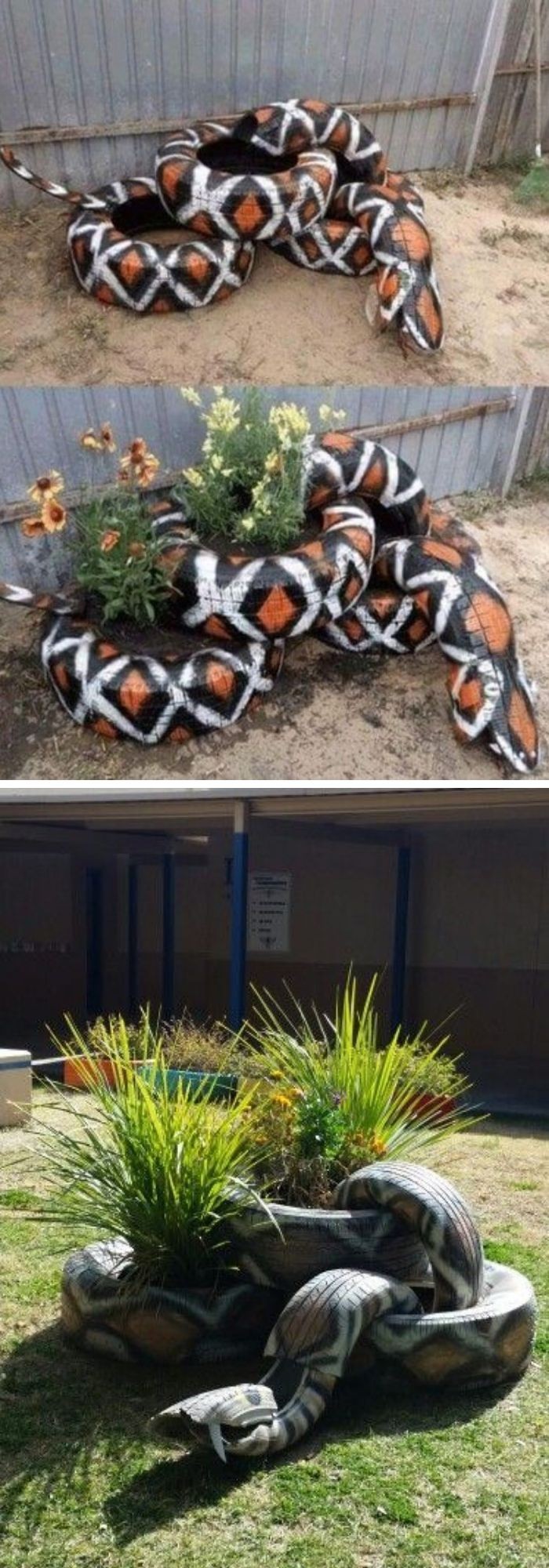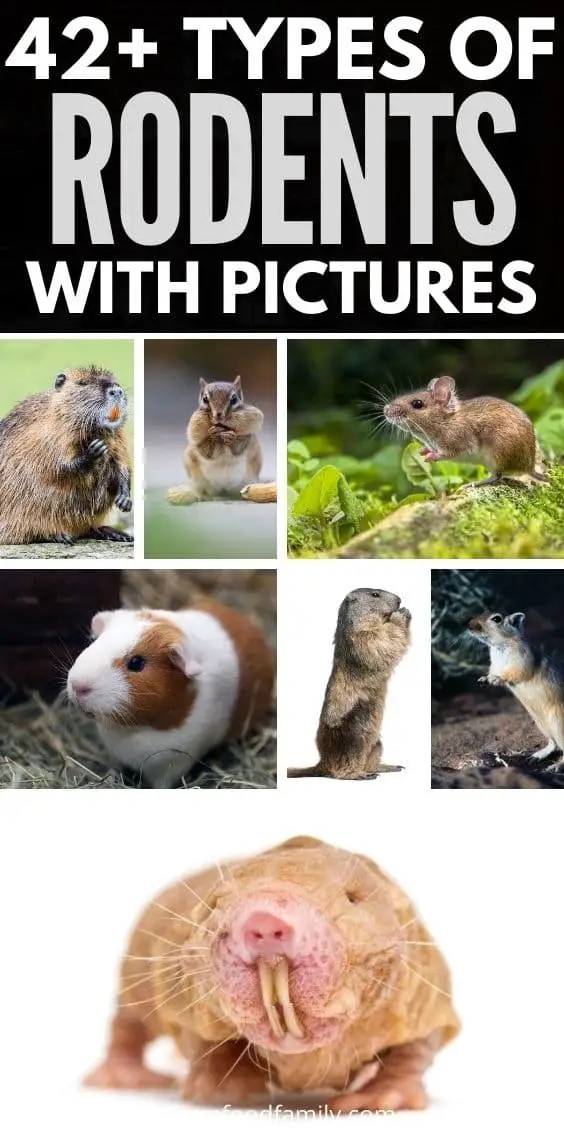19 Mulch Alternatives For A Beautiful And Sustainable Garden
Mulch, a material spread on soil to protect plants and retain moisture, can be made from various materials like wood chips, leaves, straw, or plastic. While beneficial for gardens, it’s essential to use it properly to avoid negative effects. This article explores 19 sustainable and visually appealing mulch alternatives.
The list includes bark and wood chips, cardboard or newspaper, cocoa bean hulls, ground corncobs, crushed shells, eggshells, grass clippings, dead leaves, groundcover plants, hay or straw, metal mulch, recycled tires, tea leaves, sawdust or wood shavings, landscape fabric, organic compost, pea gravel, pine needles, and rock mulch. These alternatives offer a range of benefits and can be used to create unique garden designs.
Bark and wood chips

Tree-based mulch materials, comprising bark and wood, offer a range of benefits for gardens. The bark component is particularly effective in suppressing weeds, retaining moisture, and releasing nutrients as it breaks down. This natural process enriches the soil, promoting healthy plant growth. Similarly, wood chips excel at controlling erosion, adding essential nutrients to the soil, and providing crucial insulation to plants vulnerable to frost damage.
These eco-friendly options make them an attractive choice for gardeners seeking a low-maintenance, sustainable solution.
Cardboard or Newspaper
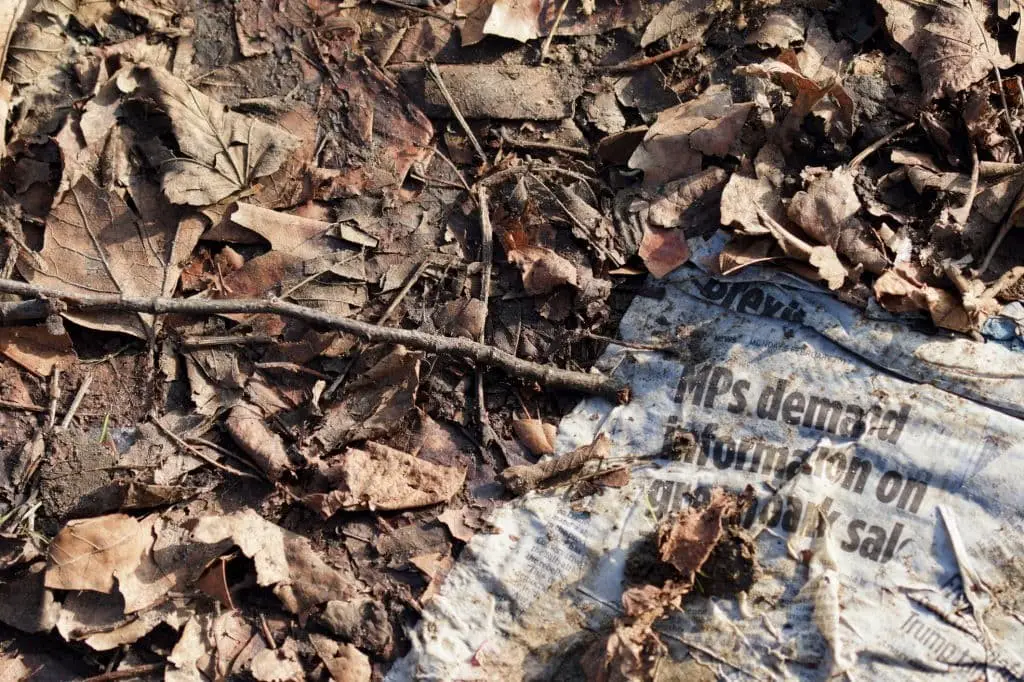
Newspaper and cardboard mulches, while made from recyclable materials, offer a range of benefits for gardens. The decomposition process not only suppresses weed growth but also retains moisture in the soil and adds essential nutrients as it breaks down. However, their lightweight nature can cause them to become dislodged easily by wind or foot traffic, making them best suited for areas with minimal pedestrian activity.
Additionally, while they do provide some moisture retention, they are less effective at this task compared to other materials like wood chips or straws.
Cocoa bean hulls
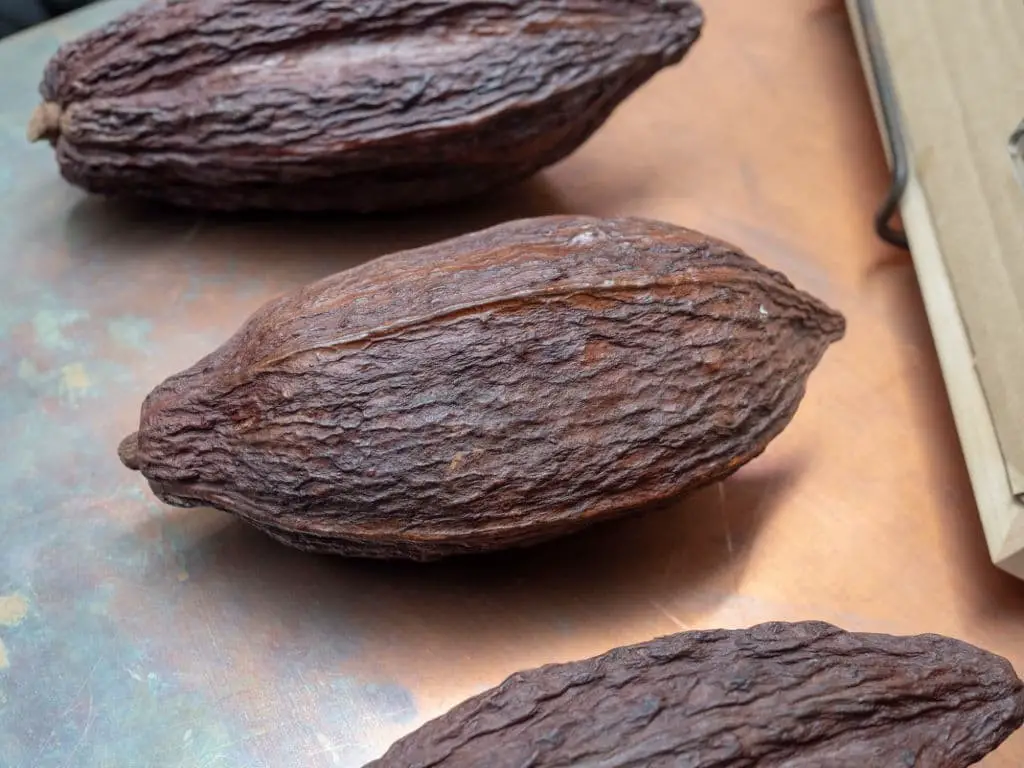
The humble cocoa bean hull offers a multitude of benefits for gardeners, despite being an unconventional mulch material. The outer casings of these beans contain valuable nutrients that become readily available as they break down in the soil. This process also helps to retain moisture and suppress weed growth, making it an attractive addition to any gardening strategy.
The earthy, chocolatey aroma released by decomposing cocoa bean hulls can be a pleasant surprise for gardeners who appreciate the subtle nuances of their surroundings. While these hulls may come with a higher price tag than more traditional mulch options, their unique properties make them a valuable resource for those looking to add a touch of uniqueness to their gardening practices.
Ground corncobs
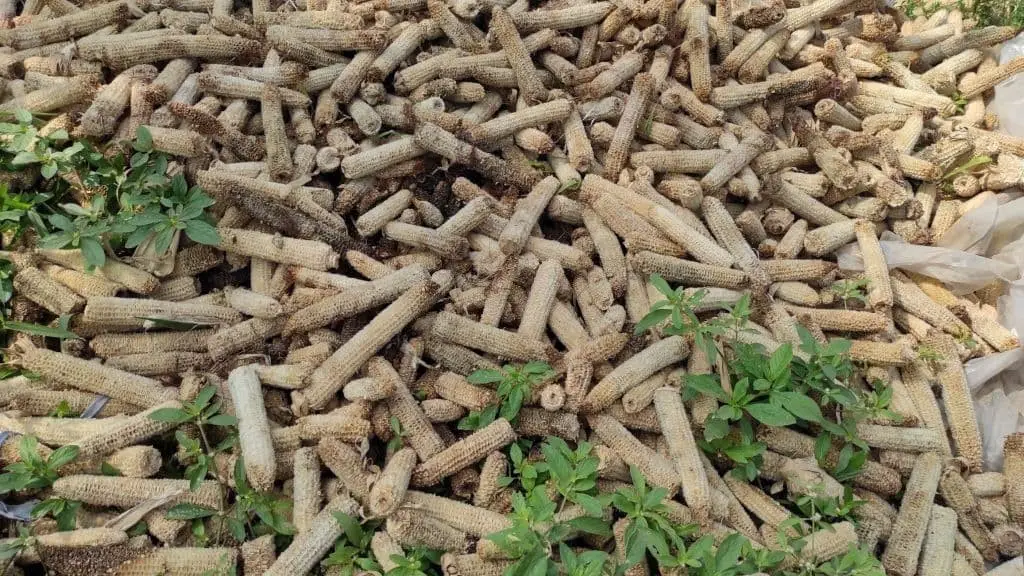
Ground corncob mulch is a valuable resource created from the shells of corn kernels. Its advantages include mitigating erosion, enriching soil with essential nutrients, and offering insulation to vulnerable plants during frosty conditions. However, it also presents some drawbacks. One major concern is its propensity to get blown away in windy conditions, potentially requiring more frequent reapplication.
Additionally, ground corncob mulch may harbor weed seeds, which can lead to unwanted plant growth in the long run. Furthermore, this type of mulch might not be as readily available as other options, making it less accessible for some gardeners and farmers.
Crushed Shells
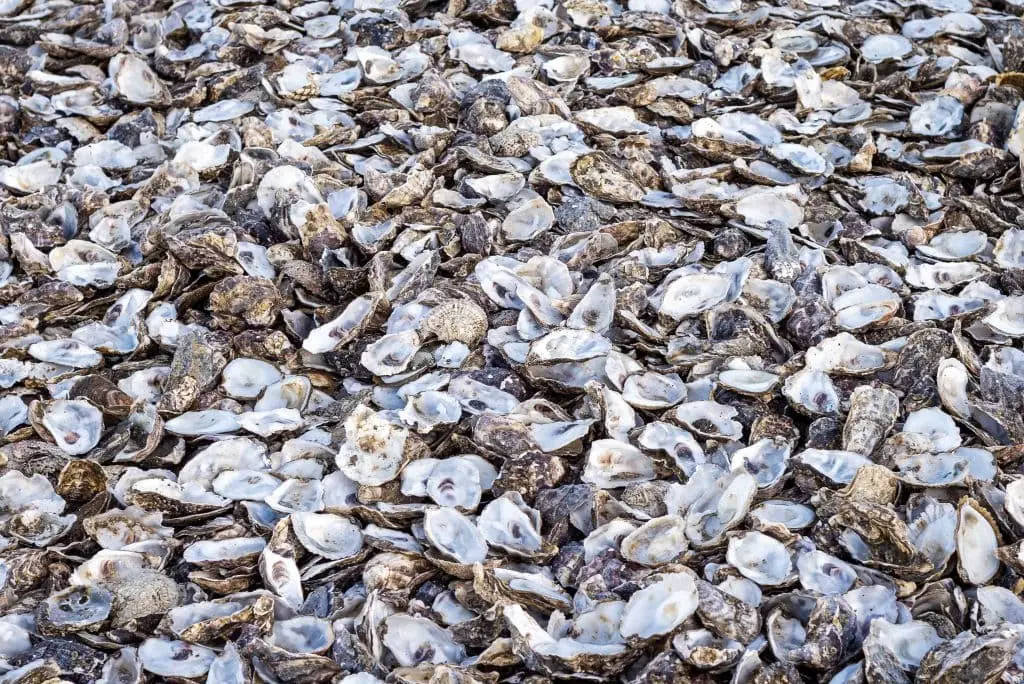
Crushed shells are an unconventional yet viable mulch alternative that offers distinct benefits for your garden. Not only do they help retain moisture in the soil, but they also introduce calcium and other essential nutrients to the growing environment. However, it’s crucial to implement a weed barrier beneath the crushed shells to prevent them from dispersing or becoming ingrained in the soil. This mulch option may not be as effective at suppressing weeds compared to organic-based alternatives.
Furthermore, crushed shells can be pricier than their organic counterparts and might be harder to procure in certain regions. Nonetheless, for gardeners seeking a unique approach to mulching, crushed shells are definitely worth considering.
Eggshells
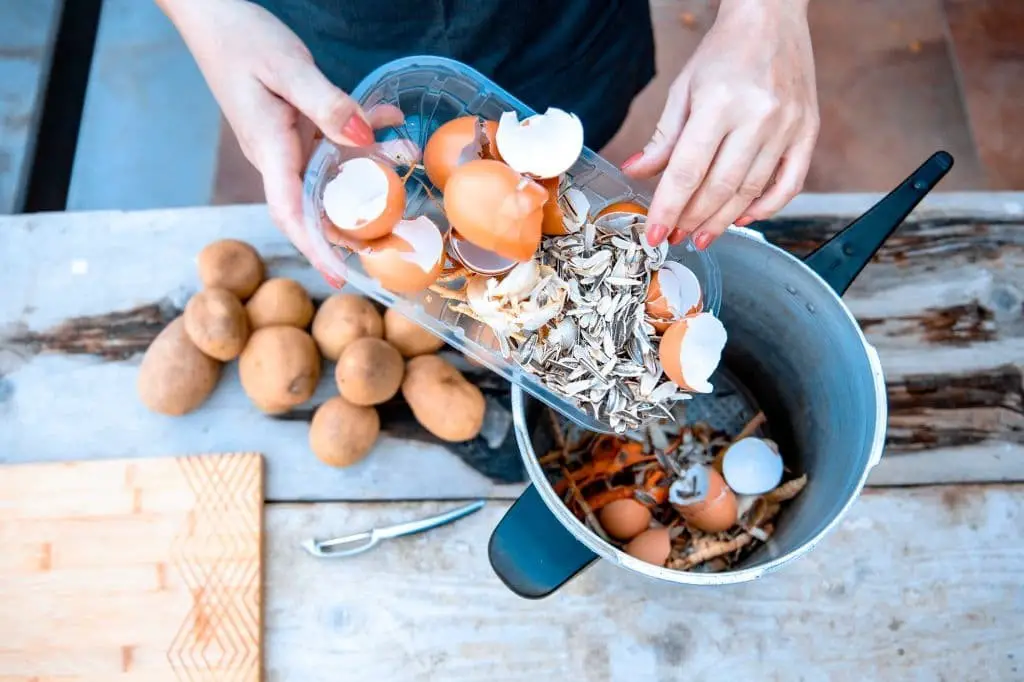
Eggshells are an increasingly popular mulching option, offering a unique set of benefits for your garden. As a source of calcium and other essential nutrients, eggshells can enrich the soil while helping to retain moisture. To get the most out of this unconventional mulch, be sure to crush them into small pieces before application, allowing for quicker decomposition. While eggshells are a valuable addition to your gardening arsenal, they do come with some drawbacks.
One of the primary concerns is their slow rate of decomposition, which may diminish their effectiveness at suppressing weeds compared to organic-based mulches. Additionally, if left in larger pieces, eggshells can attract unwanted visitors like rodents and other wildlife seeking a snack.
Grass Clippings
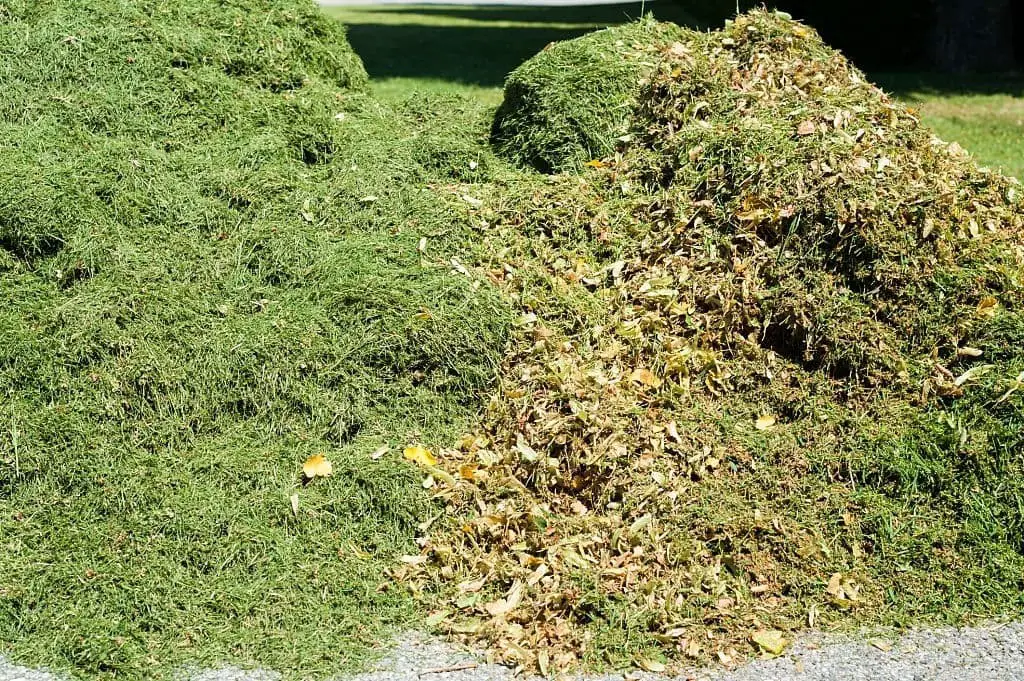
Grass clippings offer a unique advantage as a mulch alternative, boasting two key benefits: they’re readily available and come without a financial cost. As these clippings break down, they release essential nitrogen and other nutrients into the soil. However, it’s crucial to note that grass clippings may not prove effective in suppressing weed growth unless applied correctly.
Furthermore, leaving them out for an extended period can result in an unappealing mess, highlighting the importance of proper timing when utilizing this natural mulch.
Dead Leaves

When it comes to mulching, dead leaves are an excellent choice. Not only are they readily available and easy to obtain, but they also contribute to retaining moisture in the soil as well as providing essential nutrients like potassium as they break down over time. To ensure the effectiveness of this natural mulch, consider laying a weed barrier beneath it to prevent blowing or embedding issues.
While dead leaves make for a great mulching option, one potential drawback is the need to periodically replace them, which can become a recurring task.
Groundcover Plants
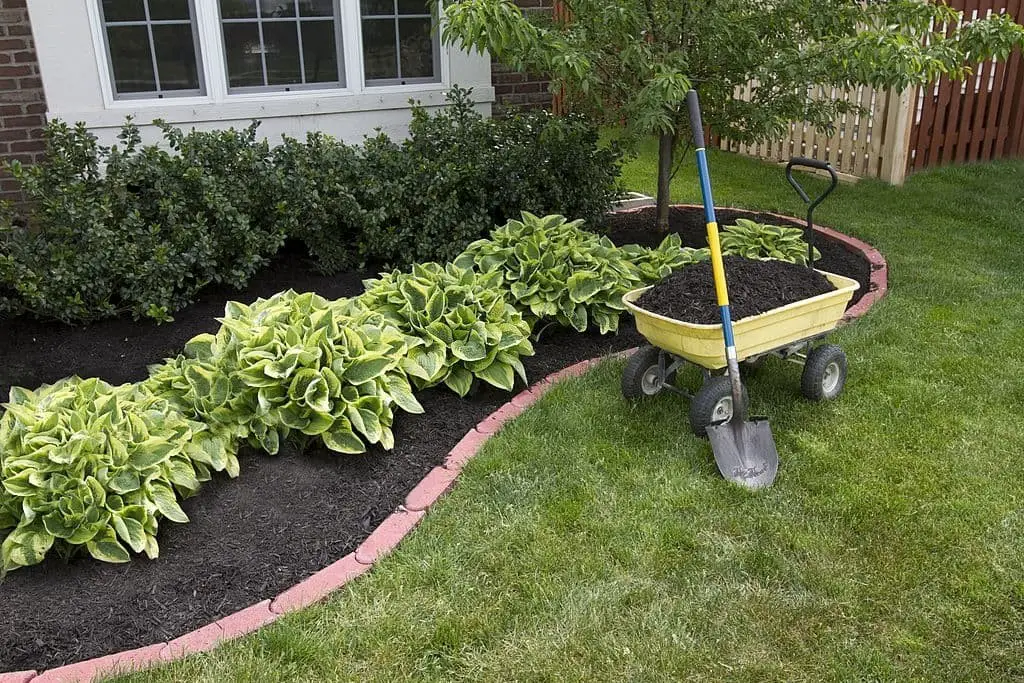
In addition to traditional mulching methods, planting groundcover plants can be a game-changer for your garden. Not only do they boost the visual appeal of your outdoor space, but they also play a crucial role in retaining soil moisture, preventing erosion, and suppressing weeds. One of the most significant advantages of using groundcovers as a mulch alternative is their ability to prevent pesticides from leaching into groundwater by blocking sunlight that could trigger pesticide absorption.
This eco-friendly approach not only benefits your garden but also contributes to a healthier environment. If you’re looking for some top-notch groundcover plants to incorporate into your mulching strategy, consider the following options: Ajuga, Creeping Phlox, Geranium, Myoporum Parvifolium (Creeping Boobialla), Sedum Species, and Stachys. These versatile and effective groundcovers can help you achieve a lush, thriving garden while minimizing your environmental footprint.
Hay or Straw
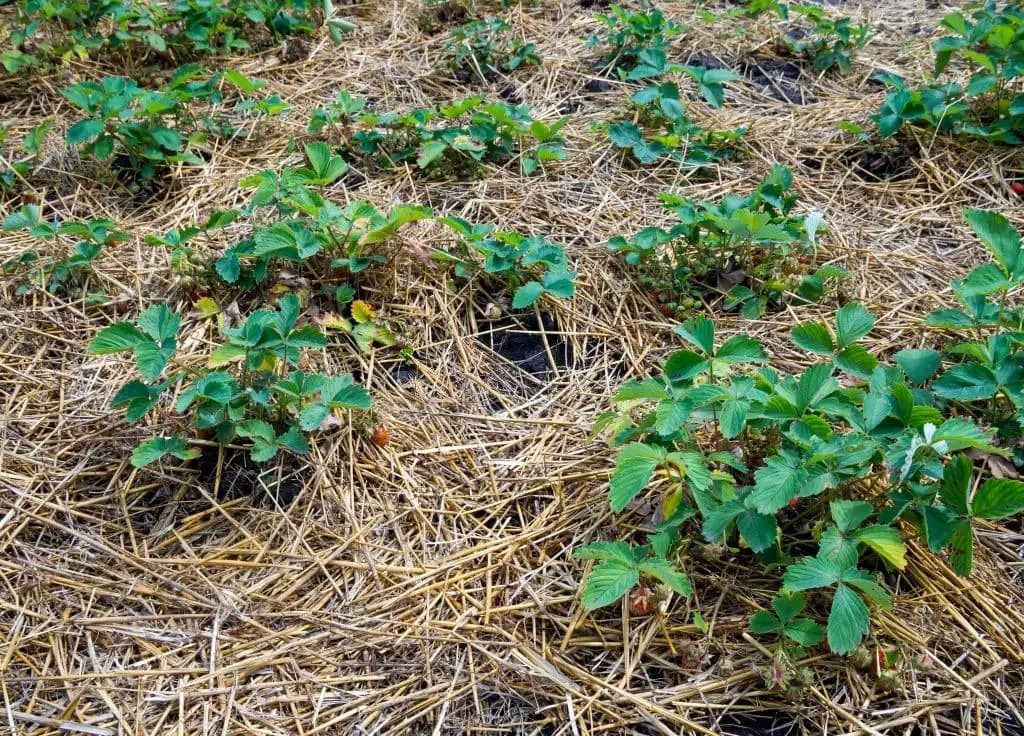
Straw mulch is another popular option for gardening and landscaping projects. This type of mulch is created by cutting the stems of cereal grains like oats or wheat into small pieces, also known as straw. The advantages of using straw mulch include suppressing weed growth, retaining moisture in the soil, and adding nutrients as it breaks down.
Hay mulch, on the other hand, is made from dried grasses such as straw or alfalfa and offers a few benefits over traditional mulches, including fewer weeds and suitability for use with food crops. However, both hay and straw mulches have some drawbacks, including higher costs compared to other options and a shorter lifespan that requires more frequent replacement.
Metal mulch
Metal mulches, crafted from a diverse range of materials such as aluminum, copper, brass, or steel, offer several benefits over traditional mulching options. Notably, their long-lasting nature – up to a decade in some cases – ensures consistent soil coverage and weed suppression. Additionally, metal mulches can help regulate pests and reflect heat back into the soil, fostering optimal crop growth.
While they may not be the most budget-friendly option, their longevity and multifaceted benefits make them a worthwhile investment for many farmers.
Recycled Tires
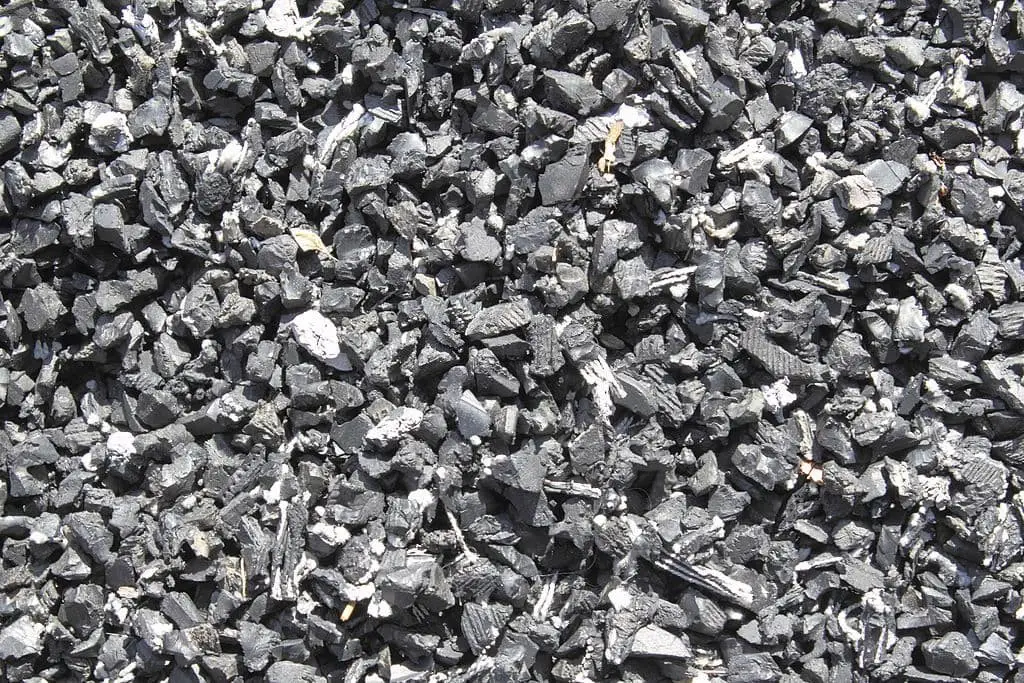
A frequently sought-after mulch alternative for gardens and landscapes is recycled tires. Tire mulch comes in a range of colours, including black, brown, green, and red, boasting an impressive lifespan of up to five years. Its versatility is another major draw, as it can be repurposed as planters, creating decorative rings around trees and flower beds or serving as pathways through landscaped areas.
However, one notable drawback of tire mulch is its propensity to absorb water rather than retain moisture in the soil, necessitating more frequent watering.
Tea Leaves
When considering tea leaves as a mulching material, it’s essential to weigh the benefits against any potential drawbacks. On the plus side, tea leaves are incredibly lightweight, making them easy to spread and aerate around plants. Their absorbent nature also helps retain moisture in the soil, reducing the need for frequent watering. As they break down, tea leaves even add valuable nutrients to the soil, promoting healthy plant growth.
However, it’s important to note that using tea leaves as mulch can come with some drawbacks. For instance, they may be a costly option, especially if you’re looking to use them in large quantities. Furthermore, tea leaves can inadvertently attract unwanted visitors like squirrels, raccoons, and other rodents, which could lead to problems if left unchecked.
Sawdust or Wood Shavings
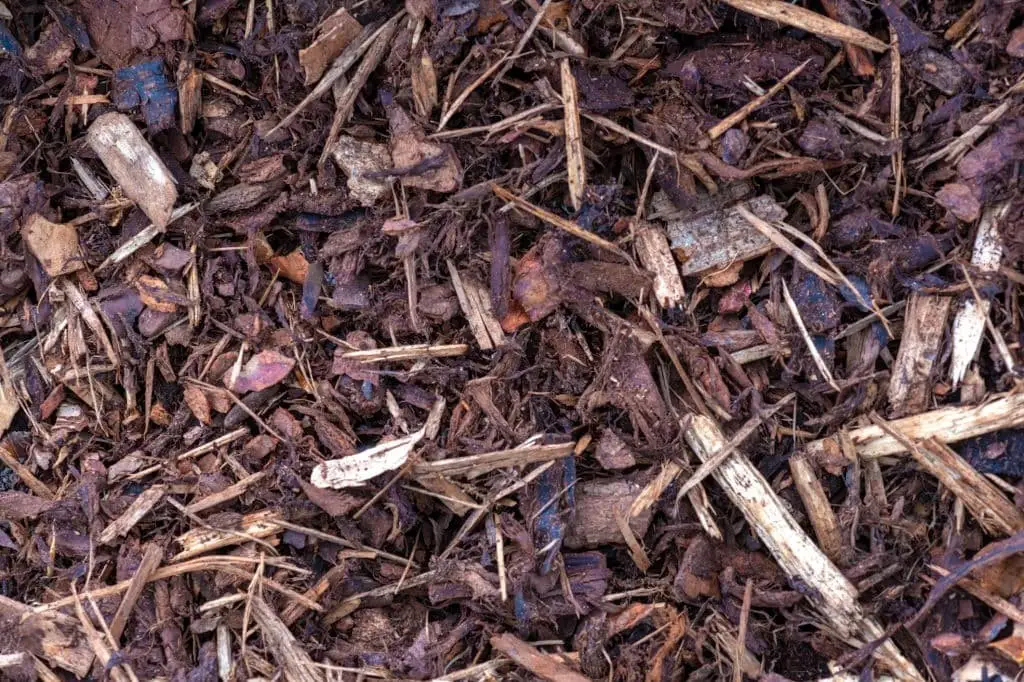
Mulching materials like sawdust and wood shavings offer a natural alternative for retaining soil moisture and adding visual appeal to gardens and landscapes. Sawdust is created by cutting lumber into small pieces, while wood shavings are produced through the shaving process of blocks of wood with a sharp blade. Both mulch types contribute to maintaining optimal soil hydration levels. Moreover, they possess an innate decorative charm that can enhance the overall aesthetic of your outdoor space.
However, it’s essential to note that sawdust and wood shavings may contain chemical residues from their production process, which could potentially harm the environment. Furthermore, these organic materials might attract unwanted pests, such as termites and carpenter ants, which can pose a threat to the health of your plants. Before incorporating sawdust or wood shavings mulch into your garden, consult with your local municipality to ensure compliance with any relevant regulations.
Landscape fabric
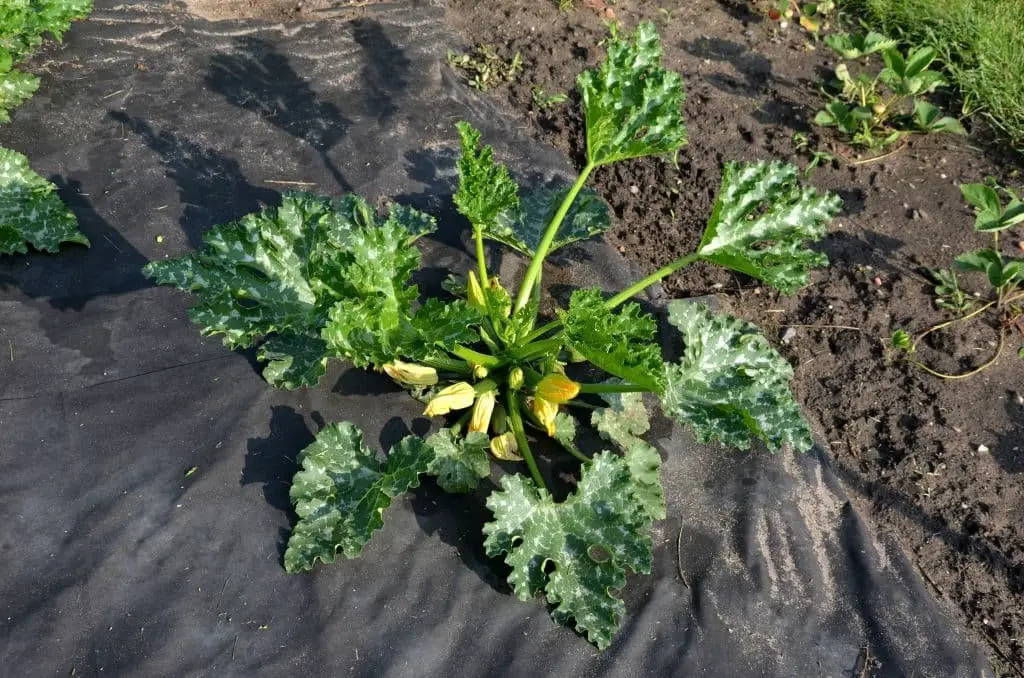
A practical and effective way to suppress weed growth, landscape fabric offers an innovative alternative to traditional mulching methods. Made from woven plastic, this versatile material not only hinders weeds’ ability to germinate but also helps conserve water by blocking the sun’s rays. However, it is essential to secure the fabric with a layer of another type of mulch to prevent it from shifting or blowing away.
Organic compost

Organic compost offers a natural alternative to traditional mulch options. This eco-friendly solution is crafted from a blend of organic materials, including leaves, grass clippings, and food scraps. By enriching the soil’s quality and drawing in beneficial insects, compost can be used as a standalone mulch or combined with other varieties for added benefits. However, it does come with some drawbacks.
One significant consideration is that compost needs to be regularly reapplied due to its tendency to decompose over time. Additionally, while attracting beneficial insects is a plus, organic compost can also draw in unwanted pests like rodents. Despite these cons, many gardeners find the advantages of using organic compost far outweigh its limitations.
Pea gravel
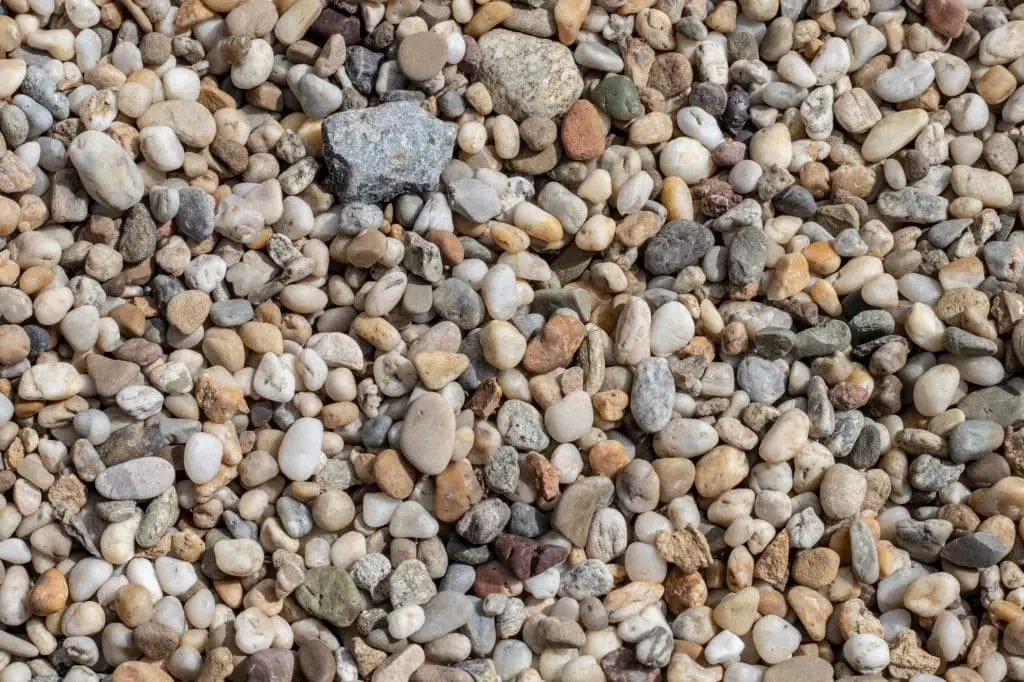
While pea gravel offers a natural and aesthetically pleasing option for mulching, it’s essential to consider its pros and cons. On the plus side, pea gravel provides a durable layer that not only adds texture but also helps suppress weed growth, making maintenance a breeze. However, one must weigh these benefits against the potential drawbacks. For instance, pea gravel can be quite pricey, which may be a significant factor for those on a budget.
Additionally, its durability notwithstanding, it may require replenishment every few years to maintain its original appearance and functionality.
Pine Needles
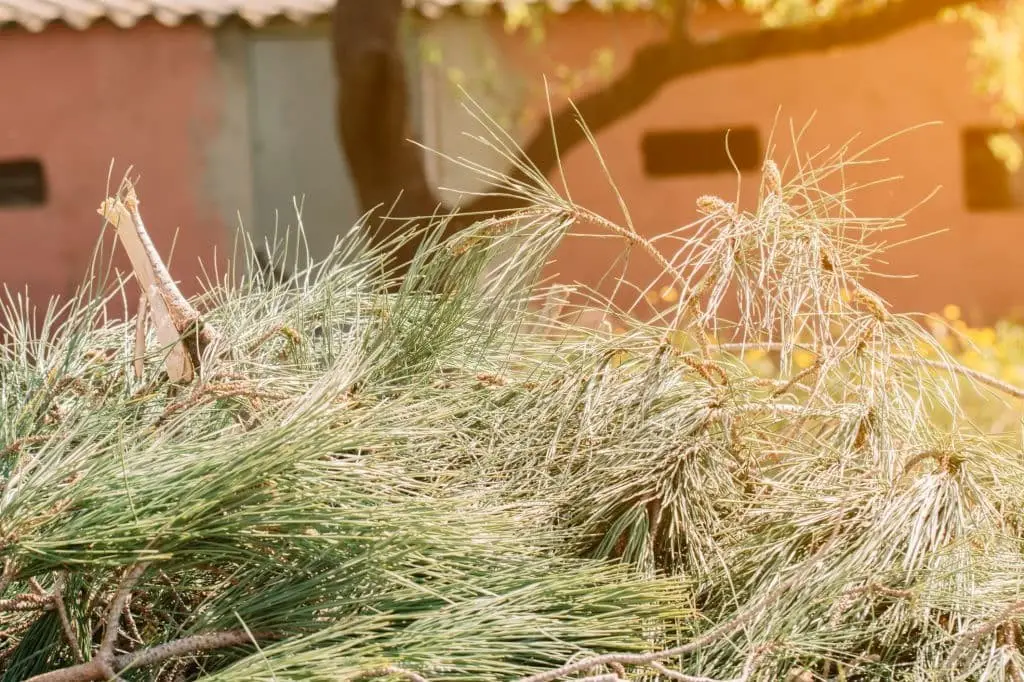
Pine needles offer a unique mulching solution that benefits the soil in several ways. Their acidic nature helps maintain a balanced pH level, while their ability to retain moisture keeps the soil hydrated. As they break down, pine needles also contribute valuable nutrients to the soil.
Although working with them can be challenging due to clumping, and it’s essential to keep them away from heat sources to prevent fire hazards, the benefits they bring to the soil make them a viable alternative to traditional mulches.
Rock mulch
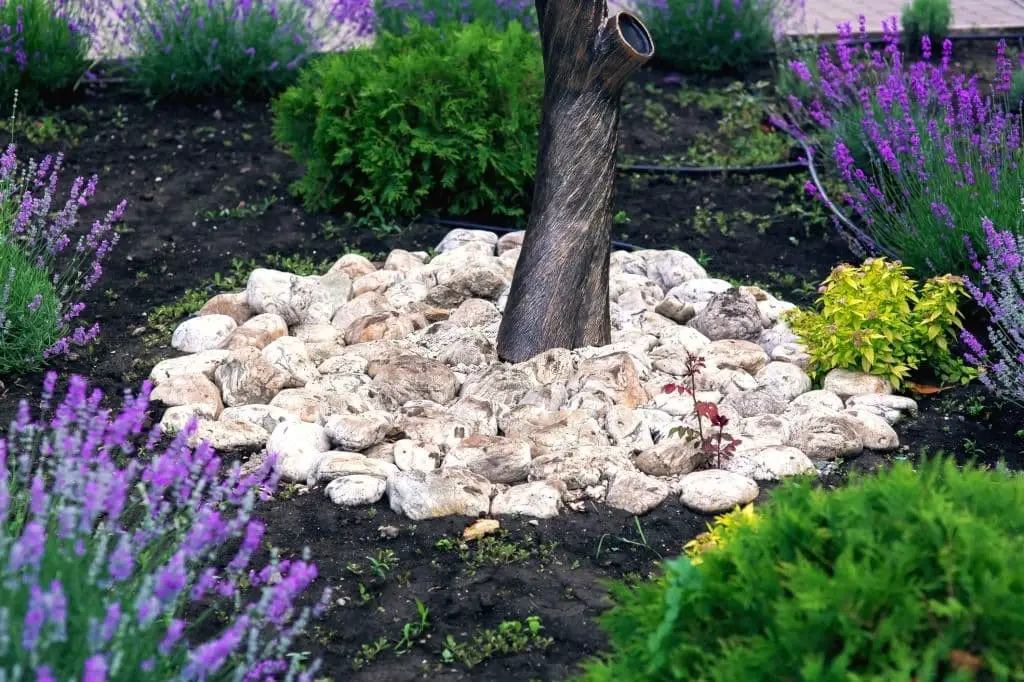
One effective mulch alternative is rock mulch, offering a range of colors to add visual interest to your garden. This type of mulch not only enhances aesthetics but also plays a crucial role in retaining soil moisture and suppressing weeds. While it may come at a higher cost than other options, the benefits are undeniable. It’s essential to ensure the rocks you use are rounded or smooth to prevent any potential harm to your plants.
FAQs about mulch alternatives:
Q: What are some of the benefits of using mulch?
Mulch serves as a multi-faceted solution for plant care, offering several benefits that contribute to their overall health and well-being. Firstly, it provides protection from extreme temperatures, shielding plants from both scorching heat and biting cold. Additionally, mulch helps to conserve moisture in the soil, reducing evaporation and ensuring plants receive consistent hydration.
Furthermore, it suppresses weed growth, eliminating competition for nutrients and minimizing the need for herbicides or other pesticides.
Q: What are some of the disadvantages of using mulch?
While mulch can provide numerous benefits for your garden, improper use can have negative consequences. Soil compaction, waterlogging, and an increase in weed growth are just a few issues that can arise if mulch is not utilized effectively.
Q: What are some of the most common types of mulch?
When it comes to mulching, there’s a wide range of materials to choose from, each with its own unique characteristics. Some popular options include wood chips, which can add a natural, rustic touch to your garden beds; leaves, which are often rich in nutrients and help to suppress weeds; straw, which is lightweight and easy to spread; and plastic mulch, which is durable and long-lasting. These are just a few examples of the many different types of mulch available.
Q: What is the best type of mulch for my garden?
When it comes to selecting the ideal mulch for your garden, several factors come into play. Climate, soil type, and plant varieties all influence the effectiveness of a given mulch. Rather than settling on a single option, consider conducting a trial with different types of mulch to determine which one yields the best results for your unique gardening needs.
Q: What should I do if mulch is not available in my area?
While traditional organic mulches like leaves, grass clippings, and wood chips are popular choices, there are numerous other materials that can be used for this purpose. In addition to natural options, you may also consider using stones, gravel, or even plastic as a mulch substitute. Furthermore, if you’re looking for an eco-friendly option that also benefits your soil health, compost can be an excellent choice when it comes to mulching your garden.
Q: How often should I mulch my garden?
The rate at which you mulch your garden is influenced by not only the type of mulch you’re utilizing but also the local climate conditions, underscoring the importance of considering both factors when determining an effective mulching strategy.
Conclusion
While traditional mulches like wood chips, leaves, and straw can be effective in reducing weeds and retaining soil moisture, they may not always be the most practical or budget-friendly options. Fortunately, there are numerous alternative mulching materials to explore. Consider using stones or gravel as a low-maintenance, weed-suppressing solution. Other viable alternatives include newspaper, cardboard, or even plastic sheeting.
By experimenting with different mulches and observing their performance in your garden, you can determine which one best suits your specific climate and soil conditions. The frequency of application will also depend on the type of mulch used, as some materials may require more frequent replenishment than others.
Related Posts
To cultivate a thriving garden, irrigation is crucial. However, with water scarcity becoming a pressing concern, it’s essential to adopt water-saving techniques. Here are 7 tips for efficient vegetable irrigation that can help you conserve this precious resource. First, consider the type of plants you’re growing and their watering needs. Some vegetables require more moisture than others, so tailor your irrigation strategy accordingly.
Next, ensure your garden has good drainage to prevent waterlogged soil. This will also help reduce the risk of root rot and other diseases. Make use of mulch or organic matter to retain soil moisture and regulate temperature. Also, implement drip irrigation systems, which deliver water directly to the roots, reducing evaporation and runoff. Install rainwater harvesting systems to collect and store rainwater for subsequent uses.
Finally, monitor weather forecasts and adjust your watering schedule accordingly, taking into account factors like soil type and wind direction.




